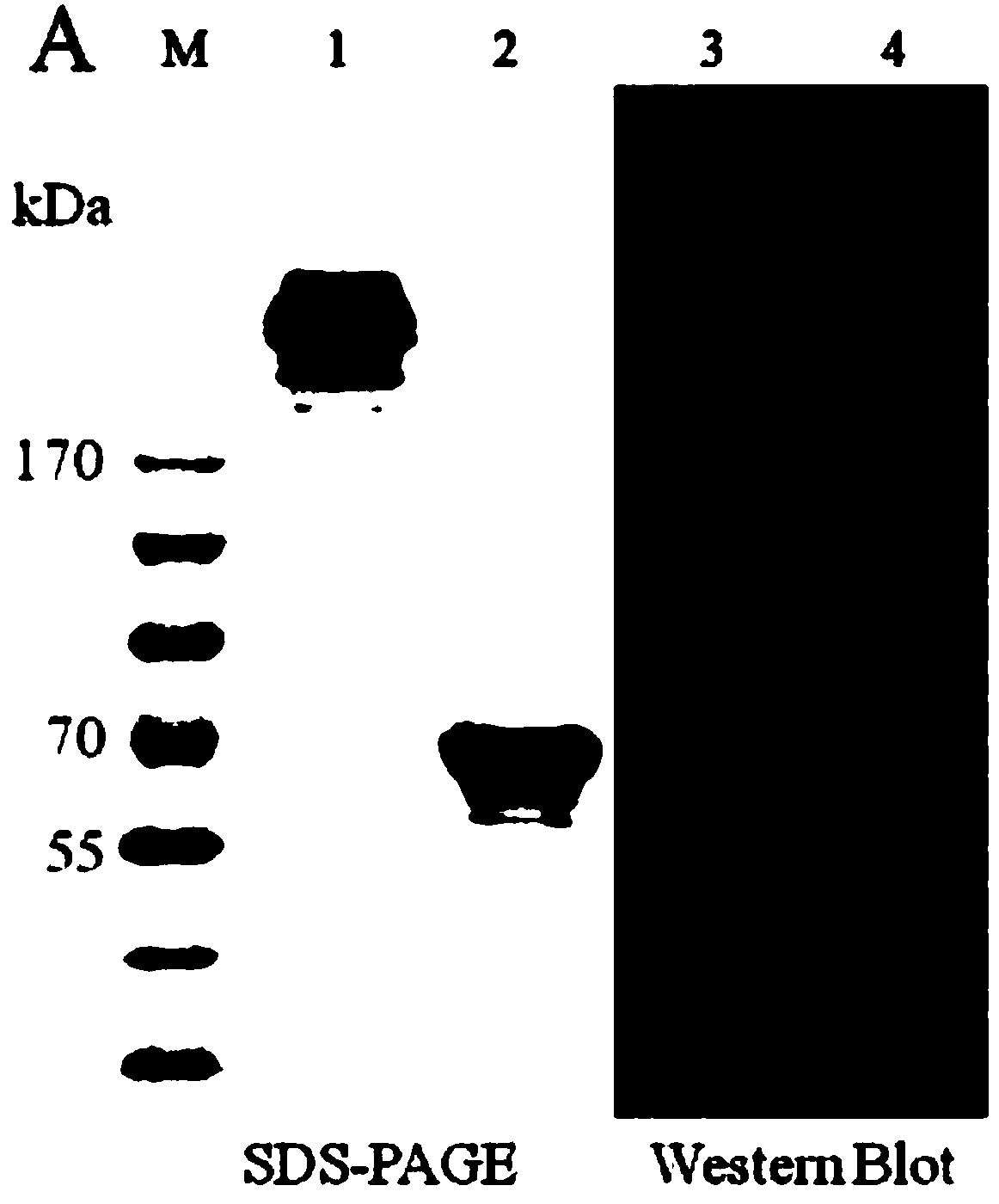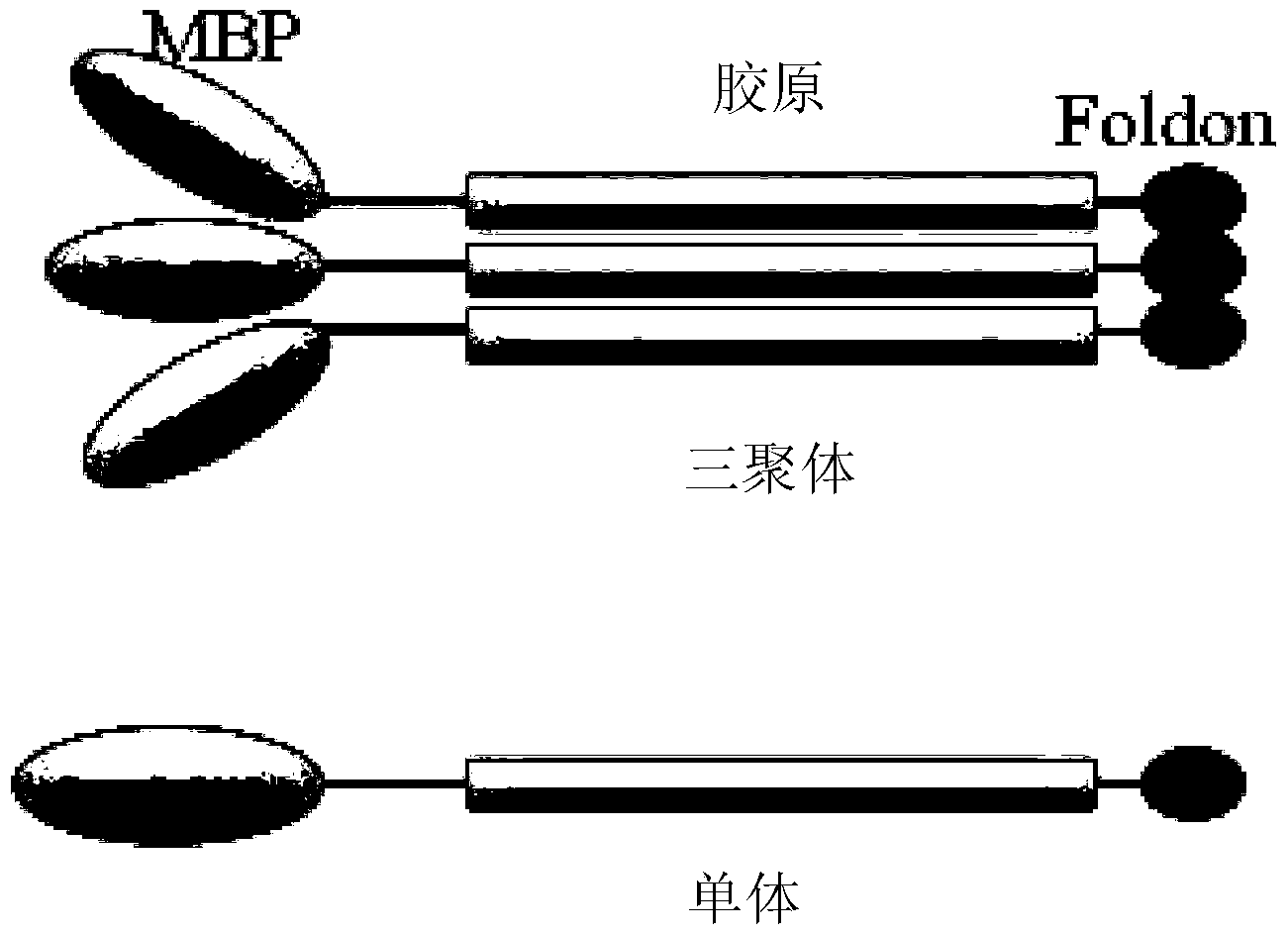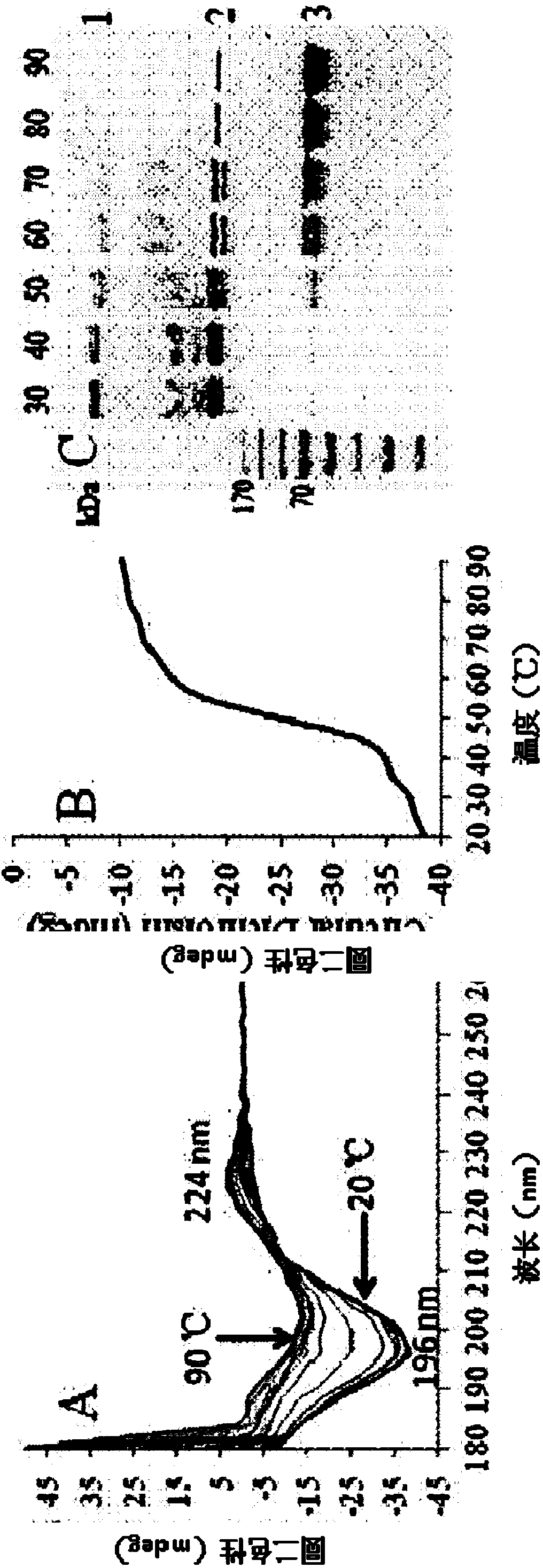Recombinant collagen-mRNA (messenger ribonucleic acid) composite material and preparation method thereof
A composite material, recombinant collagen technology, applied in medical science, prosthesis, etc., can solve the problems of carcinogenic effect immune response, easy decomposition or diffusion, mRNA instability and so on
- Summary
- Abstract
- Description
- Claims
- Application Information
AI Technical Summary
Problems solved by technology
Method used
Image
Examples
Embodiment Construction
[0031] The technical solutions of the present invention will be further illustrated and described below through specific embodiments in conjunction with the accompanying drawings.
[0032] In the following specific embodiments, the green fluorescent protein eGFP is selected to simulate the specific protein factor
[0033] (1) Cloning the DNA sequence encoding the amino acid sequence of the collagen into the pET-MBP-TevH plasmid to construct the protein vector recombinant plasmid:
[0034] As shown in SEQ ID 1, the collagen is based on human type I collagen and contains an amino-terminal His 6 10 glycine-proline-proline (GPP) were added to the label, TEV enzyme cleavage site, and both ends to increase the stability of collagen. Two glycine-proline-cysteine (GPC) were inserted into the collagen sequence to provide mRNA cross-linking sites, and the distance between the two cysteines was about 30nm.
[0035] As shown in SEQ ID 2, the DNA sequence was cloned into pUC57 plasmid ...
PUM
 Login to View More
Login to View More Abstract
Description
Claims
Application Information
 Login to View More
Login to View More - R&D
- Intellectual Property
- Life Sciences
- Materials
- Tech Scout
- Unparalleled Data Quality
- Higher Quality Content
- 60% Fewer Hallucinations
Browse by: Latest US Patents, China's latest patents, Technical Efficacy Thesaurus, Application Domain, Technology Topic, Popular Technical Reports.
© 2025 PatSnap. All rights reserved.Legal|Privacy policy|Modern Slavery Act Transparency Statement|Sitemap|About US| Contact US: help@patsnap.com



